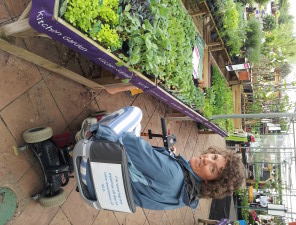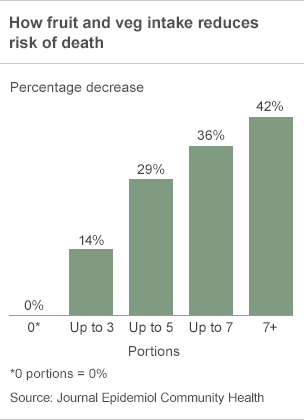Benefits of juicing
If you want to see an excellent demonstration of the benefits of juicing then I recommend the film Fat Sick and Nearly Dead. In the film Jo spends a month drinking/eating nothing but vegetable juice and sees massive improvements in his health. I don’t recommend an approach this extreme if you have ME/CFS. I used to struggle with blood sugar regulation (another of my symptoms that has dramatically improved) and I found I needed to eat regularly. I think I would have felt pretty awful without regular meals containing protein.
According to Dr Mercola
There are three main reasons why you will want to consider incorporating vegetable juicing into your optimal health program:
-
Juicing helps you absorb all the nutrients from the vegetables. This is important because most of us have impaired digestion as a result of making less-than-optimal food choices over many years. This limits your body’s ability to absorb all the nutrients from the vegetables. Juicing will help to “pre-digest” them for you, so you will receive most of the nutrition, rather than having it go down the toilet.
-
Juicing allows you to consume an optimal amount of vegetables in an efficient manner. If you are a carb type, you should eat one pound of raw vegetables per 50 pounds of body weight per day. Some people may find eating that many vegetables difficult, but it can be easily accomplished with a quick glass of vegetable juice.
-
You can add a wider variety of vegetables in your diet. Many people eat the same vegetable salads every day. This violates the principle of regular food rotation and increases your chance of developing an allergy to a certain food. But with juicing, you can juice a wide variety of vegetables that you may not normally enjoy eating whole.
Juicing recipes
Jo Cross’s website has several recipes, or you can buy juicing recipe books. However, I find rather than following a recipe I pick a selection of what I have in my fridge, so here’s my guide, based on experimentation. Mix and match to find what suits your taste. Start off with more sweetness and slowly increase the proportions of greens.
Base: Celery or Cucumber (or both)
Sweetness: apple/pear/carrot/beetroot. Too much of these will increase the sugar content of your juice. Add enough to get a pleasant flavour, but don’t go overboard.
Green leafy vegetables: Kale, Spinach, Parsley, Lettuce, cabbage etc. Slowly increase the quantity of these if you’re new to juicing.
Spice: Generally I use ginger, but you can experiment with others
Added Zing: Lemon or Lime. This is particulary useful if you have added too many green leaves and the juice is a bit bitter, it cuts through that.
Other vegetables: Anything you want. I like fennel, brocolli, peppers, but experiment.
What type of Juicer is best?
There are two main types of juicers: masticating and centrifugal. Generally, centrifugal juicers are cheaper than masticating juicers, but masticating juicers ensure more enzymes from the fruit are retained and also extract more juice from a given amount of produce.
If you are new to juicing I recommend you buy a centrifugal juicer. This way if you find juicing does not suit you, you have not spent a huge amount of money. If your energy is limited (as mine was when I started) then look for one that can fit whole fruits and vegetables. It’s a huge benefit not to have to cut up your apples before you add them to the juicer.
Juicers can also be bought second hand, or sometimes found on freecycle. This would be a great way to try juicing without a financial outlay.
Juicing Vs Smoothies
I haven’t written a post about green smoothies yet (that’s coming soon), but it seems some people question whether it’s best to juice vegetables or blend them.
The answer seems to be that there are benefits to both, and I am currently including both in my diet. Juices are easy to digest, and provide a concentrated shot of micronutrients, while smoothies contain the whole vegetable/fruit, including fibre and phytonutrients found in the skin. You can also add protein and healthy fats to smoothies to provide a meal in a glass.
My Juicing Experience
I’ve been juicing for about 18 months now. It was something my nutritionist suggested. At the time I was struggling with adrenal fatigue, despite taking supplements. My nutritionist suggested that a vegetable juice, containing ginger, in the afternoon would give my adrenals an extra boost.
I was sceptical and had a few concerns about juicing. I had tried juicing, once, several years ago when I bought a food processor with a juicing attachment. I remember the juicing process was difficult and messy and I did not enjoy drinking the resulting carrot and apple juice.
After talking things through with my nutritionist, we came up with a plan; I would contact my friend Amber at LoveFit – I was pretty sure she’d have a juicer (and I was right)- and ask if she could make me a juice, letting me watch her make it and clean the juicer afterwards. I was concerned that I did not have the energy to make the juice and clean the juicer afterwards.
Amber made me a carrot, apple and ginger juice, and it was surprisingly pleasant. She explained that as long as you clean the juicer immediately it’s not a lot of effort. I then bought a cheap centrifugal juicer and started juicing for myself. Initially I could only juice on my good days, and I had quite a few days where I simply didn’t have the energy to make it. Gradually though (as with most activities) it became something I managed more frequently and eventually everyday.
I also slowly changed my juice until it contained more vegetables and less fruit, with a focus on green leafy vegetables. After a year of juicing consistently I splashed out on an Omega Vert Masticating Juicer. I bought this second hand on Ebay, but it was still expensive. However, this gets much more juice out of produce, especially green leafy vegetables, and apparently more enzymes are retained in the juice. I currently juice nearly every day, usually mid afternoon, and I currently get a noticeable increase in energy afterwards, which is helpful when I’m preparing dinner. I did not get this energy burst when I first started juicing, it’s a relatively recent thing, and one I’m grateful for.




